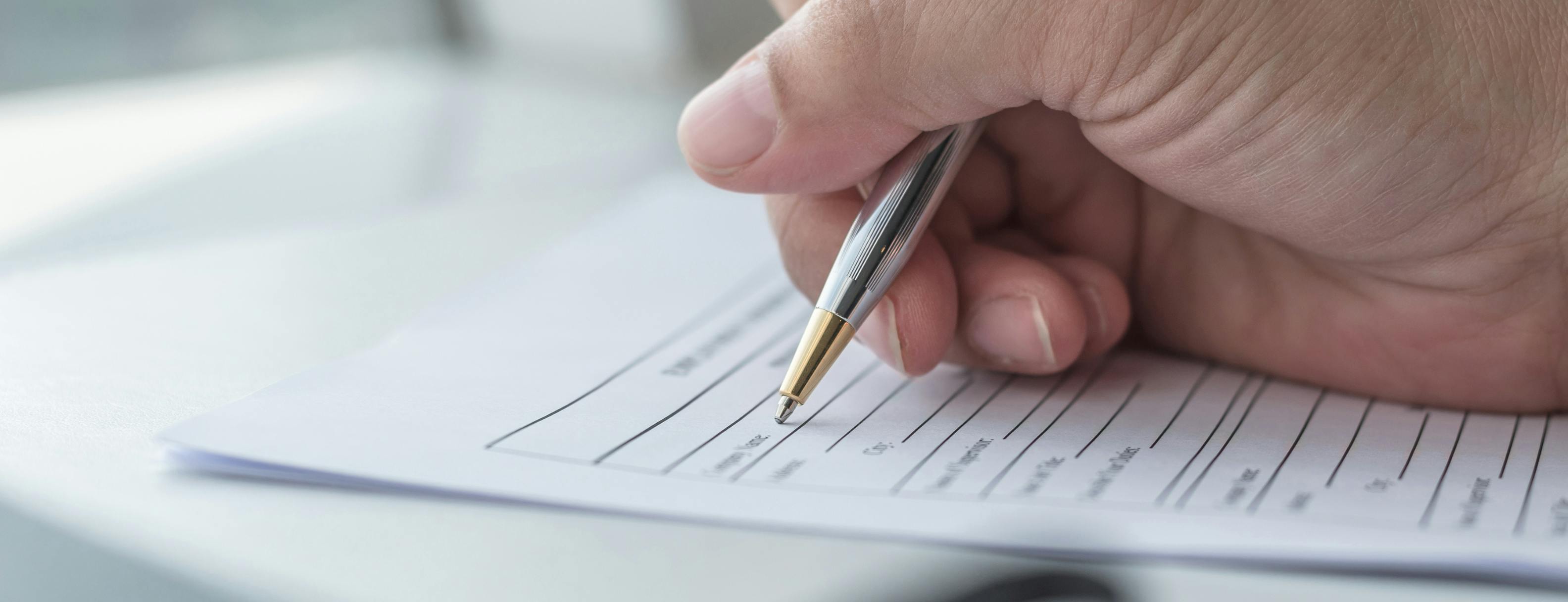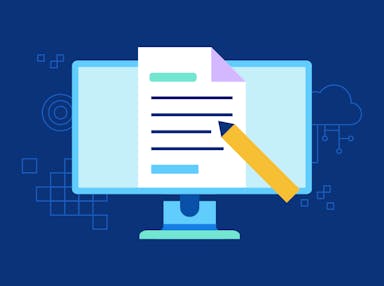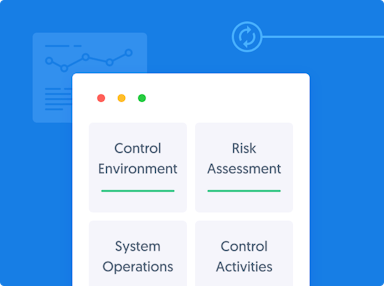
SOC 2 vs Security Questionnaires: What’s the Difference & Which Do You Need in 2026?
Anna Fitzgerald
Senior Content Marketing Manager
Rob Gutierrez
Senior Cybersecurity and Compliance Manager, CISA, CCSK, CMMC RP
In today’s environment of rising cyber attacks and expanding vendor risk, customers increasingly expect validated proof of security before doing business with a new partner.
According to Secureframe’s Cybersecurity & Compliance Benchmark Report 2026, the top methods companies use today include sharing a third-party audit report, like a SOC 2 report, (73%) and completing security questionnaires or RFPs (70%).
Each plays a role in due diligence but they are not interchangeable, and choosing the right one can materially impact your sales, customer trust, and operational burden. Below, we’ll explain how each can help you demonstrate trust and when to use each to streamline due diligence, accelerate sales, and strengthen customer confidence.
SOC 2 report vs security questionnaire
A SOC 2 report is an independent auditor’s attestation regarding the operating effectiveness of an organization’s security controls. It helps establish trust between service providers and their customers.
A security questionnaire, on the other hand, is a list of questions that assess an organization’s security and privacy practices. Organizations often request a completed security questionnaire before partnering with a new vendor.
Recommended reading

Security Questionnaire: How to Answer and Send Your Own [+ Free Template]
What are the similarities between SOC 2 vs security questionnaire?
Both SOC 2 and security questionnaires can help prove your security posture to potential customers and partners by providing detailed and extensive overviews of your security posture and internal controls.
SOC 2 is a security and compliance standard created by the American Institute of Certified Public Accountants (AICPA) that offers guidelines for protecting sensitive data from unauthorized access, security incidents, and other vulnerabilities. Customers working with organizations that are SOC 2 compliant can rest assured that their data is safe.
Designed to help companies understand and mitigate vendor risk, security questionnaires are an important part of a company’s due diligence process. Companies that receive your completed security questionnaires can trust that you will protect their sensitive data and feel confident doing business with you.
Oftentimes much of the information required to answer security questionnaires can be found in SOC 2 policies and/or the SOC 2 audit report. Also, evidence requested as part of security questionnaires can be the same as what is needed for SOC 2.
Download this illustrative example of a complete SOC 2 Type II Report for a more in-depth look at what a report might cover and how long it may be.
Recommended reading

SOC 2 Compliance: Requirements, Audit Process, and Benefits for Business Growth
What are the differences between SOC 2 vs security questionnaire?
While they share many similarities, a SOC 2 report is not the same thing as a security questionnaire and they are not interchangeable.
Security questionnaires are part of the vendor diligence process. With these self-assessments or requests for information, you answer detailed questions about your security and privacy controls to satisfy a potential customer’s needs regarding their own third-party risk exposure.
SOC 2 is a third-party attestation conducted by an accredited CPA. It involves an external audit against a specific set of requirements and should be renewed on a regular basis.

The Ultimate Guide to SOC 2
Learn everything you need to know about the requirements, process, and costs of getting SOC 2 certified.
Can a SOC 2 report help you bypass security questionnaires?
The short answer: yes but not always. Here’s the long answer:
Security questionnaires can be a long, manual, and repetitive way to provide prospects and other stakeholders with assurance of your security posture. Each questionnaire is unique and can contain hundreds of questions. When a service organization is fielding incoming questionnaires from numerous potential customers, it’s easy to become overwhelmed.
In our 2026 Benchmark Report, 70% of organizations say they still rely heavily on questionnaires and RFPs, even though 73% regularly need to share a third-party audit report like SOC 2. This signals that organizations are being asked to provide security assurance in multiple ways.
But the data also shows that security questionnaires alone aren’t enough—especially for companies moving upmarket. Delaying formal compliance can directly impact revenue. According to the report:
- 46% of companies say a lack of compliance certification has delayed sales
- 61% report that achieving compliance is required to win or renew contracts
- 38% have lost revenue or competitive bids without certification
- 40% pursue compliance specifically to reach enterprise buyers
In other words, while questionnaires remain part of the due diligence process, compliance reports and certifications are becoming non-negotiable for growth, trust, and contract eligibility.
That’s why many organizations use a SOC 2 report in lieu of security questionnaires whenever possible. A SOC 2 offers an independent, standardized assessment of an organization’s security posture and control environment. This third-party validation is reusable and can be shared with multiple stakeholders—eliminating the need to rebuild answers from scratch for every new prospect.
In many cases (though not always), an up-to-date SOC 2 report can answer the majority of points in a security questionnaire. That’s because questionnaires often probe the same areas covered by SOC 2, such as your information security policy, disaster recovery plan, incident response process, and other foundational controls that are documented comprehensively in a SOC 2 report.
In short: having a SOC 2 report can replace or significantly speed up the process of filling out a questionnaire.
However, it’s important to ask your clients’ preferred method for proving a strong security posture. While some prospective customers may accept a SOC 2 report, others may not want to rely completely on a SOC 2 report and prefer to validate a specific set of security controls through a security questionnaire.
Real-world example: How SOC 2 accelerated enterprise deals for an AI startup
My AskAI, an AI customer service agent for SaaS, eCommerce, and marketplace businesses, began facing intense security scrutiny as they moved upmarket. Their two-person team was suddenly fielding bespoke security questionnaires that consumed hours—and several enterprise deals stalled entirely without a SOC 2 report.
With Secureframe, My AskAI dramatically reduced the time and effort needed to get SOC 2 ready. The platform’s intuitive workflows, deep automation, and support from their customer success manager and trusted audit partner helped them move from overwhelmed to audit-ready within weeks.
The results: SOC 2 didn’t just unblock stalled enterprise deals — it also strengthened My AskAI’s organizational maturity, increased buyer trust, and sharpened their competitive positioning against other AI tools.

The SOC 2 Compliance Kit
Simplify SOC 2 compliance with key assets you’ll need to get your report, including a SOC 2 guidebook, customizable policy templates, readiness checklist, and more.
When to choose SOC 2 vs security questionnaires
Both SOC 2 and security questionnaires help validate your security posture—but one may be more strategic depending on your customer base, growth stage, and sales motion. Below are tactical recommendations based on common scenarios.
Choose SOC 2 when:
- You’re losing deals or experiencing long sales cycles: As our Benchmark Report shows, 46% of companies experience delayed sales due to lack of compliance certification and 38% lose revenue or bids without one. A SOC 2 report can be key to unblocking deals when a questionnaire simply isn’t enough assurance.
- You’re selling to enterprise customers or highly regulated sectors: Customers upmarket or from highly regulated industries, like healthcare, fintech, and utilities, nearly always require SOC 2 or a similar audit report to advance to procurement.
- You need a scalable solution as your customer base grows: The more you grow, the more questionnaires you’ll receive from prospects and customers. A SOC 2 report is a standardized, scalable alternative to filling out dozens or more questionnaires a month.
- You want to build trust early and gain a competitive advantage: In newer, data-heavy markets like AI, vendors can stand out by getting a SOC 2 report to foster trust with buyers who need increased assurance before sharing data.
Choose security questionnaires when:
- Customers aren’t requesting SOC 2 yet: Early-stage companies that are just starting to bring on customers may start with questionnaires and then prioritize SOC 2 compliance once they are trying to move upmarket or hit a certain growth point.
- You’re in early product-market fit: If you’re dedicating most of your time and resources to launching your product or are just formalizing security processes, questionnaires may be sufficient until you mature both your product and security posture.
- Your buyer is highly regulated and requires specific validations: Some customers still require a bespoke questionnaire that addresses specific concerns and risks, even when a SOC 2 report has been provided.
Choose both when:
- Your go-to-market motion spans multiple customer segments: Enterprises and midsized businesses may demand SOC 2, while SMB buyers may still rely on questionnaires.
- You’re in a long, complex supply chain: If you’re in payments, logistics, or healthcare, for example, a SOC 2 report can help validate broad trustworthiness while questionnaires allow customers to probe specific risks.
- You want to extend your security efforts: When getting ready for SOC 2, you can repurpose a lot of the same evidence and work in questionnaires, especially when using automation like Secureframe.
Recommended reading

Why Get a SOC 2 Report? 13 Reasons According to Real Organizations
An expert answers frequently asked questions about SOC 2 vs security questionnaires
Below are answers from former auditor and Secureframe compliance expert Rob Gutierrez to frequently asked questions about SOC 2 and security questionnaires, including when you might need each—or both.
1. Do security questionnaires change or is there a standard format?
There are many types of security questionnaires, including CAIQs and RFPs. Vendors or suppliers can edit questionnaires as they best see fit to ensure vendor compliance and security.
2. Are SOC 2 and security questionnaire requirements completely at the discretion of the company asking for one? Or is there a law?
There is no law. However, SOC 2 is generally a bit more consistent among auditors, whereas each security questionnaire is unique to each vendor, supplier, and customer.
3. Which is easier and faster to complete, SOC 2 or security questionnaires?
It depends and easier is a subjective term. If you’ve never been through a SOC 2 audit but are using Secureframe, then security questionnaires will probably be easier and faster to complete. However, if you are already in compliance and already have been through an audit, then going through a SOC 2 audit may be easier.
4. For a startup, do you recommend SOC 2 or security questionnaires?
For a startup, I would recommend completing whatever the customer or supplier is asking for.
5. When do I know a SOC2 will suffice over a security questionnaire?
SOC 2 reports and security questionnaires can be used in lieu of each other, but that is not the case all the time. So it’s important to ask the customer or whoever is asking for either the report or questionnaire if one will suffice over the other.
6. Should my company require security questionnaires or SOC 2 as part of our due diligence process? Or both?
Whichever gives your company greater assurance and comfort over working with vendors. Generally speaking, SOC 2 covers more security controls at a deeper level. But may also want to validate a specific set of security controls through a security questionnaire.
7. How do I get started with SOC2?
Secureframe Comply provides policies, a gap assessment, and complete readiness platform to help you prepare for and complete a SOC 2 audit.
Without Secureframe, you would need to ensure audit readiness, including policies and implementation of all of the appropriate controls prior to going to an audit.
Recommended reading

SOC 2 Compliance Checklist for 2026: How to Prepare for a Successful SOC 2 Audit
How Secureframe can automate SOC 2 compliance and security questionnaires
Both SOC 2 compliance and security questionnaires require a significant investment of time and resources to complete. Secureframe’s automation capabilities can greatly reduce the amount of time and effort needed to achieve SOC 2 compliance and complete security questionnaires.
Secureframe Comply offers automated evidence collection, task management, security awareness training, evidence export, and more to optimize the SOC 2 audit readiness process and the audit itself.
Secureframe Trust includes Secureframe Questionnaire Automation, which streamlines and automates the process of managing and completing security questionnaires using machine learning and AI.
To learn more about the Secureframe compliance platform or Secureframe Trust, schedule a demo today.
This post was originally published in May 2023 and has been updated for comprehensiveness.

FAQs
What is a security questionnaire vs SOC 2 report?
A security questionnaire is a tool used to assess and evaluate the cybersecurity practices, policies, and controls of an organization. These questionnaires are often used in the context of vendor risk management, where a company evaluates the security measures of third-party vendors or service providers to ensure they meet certain security standards and do not pose a risk to their operations and data. Security questionnaires can vary significantly in length and complexity, depending on the specific needs and risks of the organization, as well as the nature of the relationship with the vendor.
A SOC 2 (Service Organization Control 2) report is the result of an audit evaluating an organization's information systems relevant to security, availability, processing integrity, confidentiality, or privacy. Developed by the American Institute of Certified Public Accountants (AICPA), SOC 2 is specifically intended for service providers storing customer data in the cloud, making it highly relevant in today's increasingly digital business environment.
When might I need a security questionnaire instead of a SOC 2 report?
Security questionnaires can be used for a variety of purposes:
- Internal Assessment: Organizations may use security questionnaires to assess their own internal security controls and practices.
- Vendor Assessment: Companies often use these questionnaires to vet potential or existing third-party service providers. This is critical because a vendor with weak security practices can become a vector for cyber attacks.
- Compliance Requirements: They are used to ensure that vendors comply with relevant industry regulations and standards, such as GDPR for data privacy, HIPAA for healthcare information, or PCI DSS for payment card security.
- Risk Management: By evaluating the security measures of vendors, organizations can identify potential risks and vulnerabilities in their supply chain.
When might I need a SOC report instead of a security questionnaire?
Each type of SOC report serves a specific audience and purpose. Organizations typically choose the type of SOC report to pursue based on their business needs, the requirements of their clients, or compliance demands in their industry. For example, a cloud service provider might pursue a SOC 2 Type II report to demonstrate their commitment to data security, while a payroll processing firm might require a SOC 1 Type II report due to its impact on financial reporting. Here are the types:
SOC 1 is primarily focused on controls at a service organization that would be relevant to an entity’s internal control over financial reporting.
SOC 2 addresses controls at the organization that relate to operations and compliance, as defined by the AICPA's Trust Services Criteria—security, availability, processing integrity, confidentiality, and privacy.
SOC 3 is similar to SOC 2, but the report is designed for a general audience. It provides a summary of the service organization’s system and the auditor’s opinion about the system without the detailed description and evidence of SOC 2.
There are two types of SOC reports:
- Type I: Evaluates the suitability of the design of controls at a specific point in time.
- Type II: Examines the operational effectiveness of these controls over a period of time (usually a minimum of six months).
What does a security questionnaire cover vs a SOC 2 report?
A typical security questionnaire might cover topics like:
- Data Protection: How is data encrypted, stored, and transmitted?
- Access Control: How does the organization control access to sensitive systems and data?
- Network Security: What measures are in place to protect against external and internal threats?
- Physical Security: How are physical data centers and offices secured?
- Incident Response: Does the organization have a plan for responding to security incidents?
- Employee Training: Are employees trained in cybersecurity best practices?
- Policy Compliance: Does the organization comply with relevant security policies and standards?
A SOC 2 report on the other hand focuses on a service organization's controls related to one or more of the Trust Services Criteria:
- Security: The system is protected against unauthorized access (both physical and logical).
- Availability: The system is available for operation and use as committed or agreed.
- Processing Integrity: System processing is complete, valid, accurate, timely, and authorized.
- Confidentiality: Information designated as confidential is protected as committed or agreed.
- Privacy: Personal information is collected, used, retained, disclosed, and disposed of in conformity with the commitments in the service organization’s privacy notice.
How do I complete a security questionnaire vs SOC 2 report?
Companies might use standard frameworks or templates for security questionnaires, such as the Standardized Information Gathering (SIG) questionnaire, the Cloud Security Alliance's CAIQ (Consensus Assessments Initiative Questionnaire), or customized questionnaires that are specific to their industry or security needs.
SOC 2 reports are unique to each organization, with the audit measures tailored to the company's specific business practices. To prepare for a SOC 2 audit, organizations typically need to undergo a significant amount of preparation, often involving a thorough review of their information security policies, procedures, and practices, and making necessary adjustments to ensure they meet the relevant Trust Services Criteria. The audit itself is performed by an independent CPA.

Anna Fitzgerald
Senior Content Marketing Manager
Anna Fitzgerald is a digital and product marketing professional with nearly a decade of experience delivering high-quality content across highly regulated and technical industries, including healthcare, web development, and cybersecurity compliance. At Secureframe, she specializes in translating complex regulatory frameworks—such as CMMC, FedRAMP, NIST, and SOC 2—into practical resources that help organizations of all sizes and maturity levels meet evolving compliance requirements and improve their overall risk management strategy.

Rob Gutierrez
Senior Cybersecurity and Compliance Manager, CISA, CCSK, CMMC RP
Rob Gutierrez is an information security leader with nearly a decade of experience in GRC, IT audit, cybersecurity, FedRAMP, cloud, and supply chain assessments. As a former auditor and security consultant, Rob performed and managed CMMC, FedRAMP, FISMA, and other security and regulatory audits. At Secureframe, he’s helped hundreds of customers achieve compliance with federal and commercial frameworks, including NIST 800-171, NIST 800-53, FedRAMP, CMMC, SOC 2, and ISO 27001.